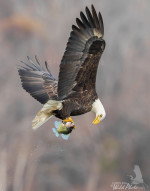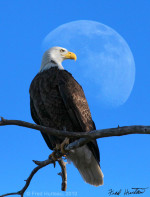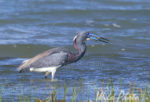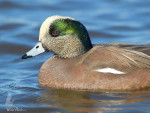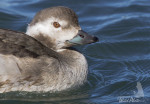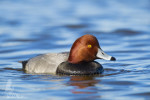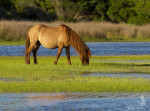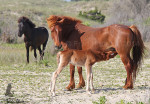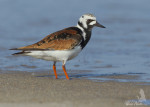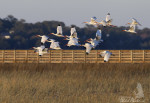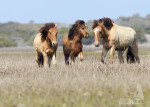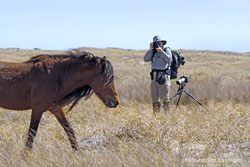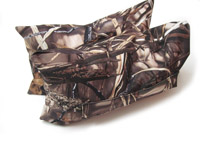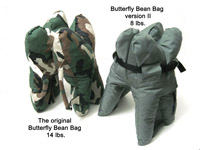A Marathon 48 Hours of Duck Heaven – Part Two
by admin on Mar.04, 2014, under Locations, Rants, Raves & Ramblings
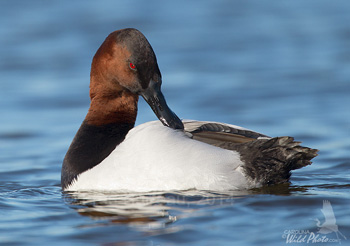 As a continuation of my recent marathon weekend post, I’d like to focus individually on the two locations from the trip that produced some great photos. In this “part two” installment, I will highlight Cambridge, Massachusetts. The location is along the Choptank River in a quiet old neighborhood near the downtown. The locals began feeding ducks that stopped over on their migration, and ever since ducks have taken advantage of the free corn they have come to expect at this one magic spot. In fact, photographing ducks here is akin to “shooting ducks in a barrel”, to quote a recognizable phrase.
As a continuation of my recent marathon weekend post, I’d like to focus individually on the two locations from the trip that produced some great photos. In this “part two” installment, I will highlight Cambridge, Massachusetts. The location is along the Choptank River in a quiet old neighborhood near the downtown. The locals began feeding ducks that stopped over on their migration, and ever since ducks have taken advantage of the free corn they have come to expect at this one magic spot. In fact, photographing ducks here is akin to “shooting ducks in a barrel”, to quote a recognizable phrase.
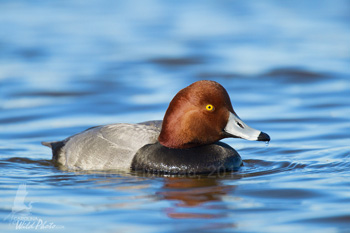 To make it clear, these are not farm ducks, or tame ducks, but wild ducks, and in particular, species you simply don’t get to see up close and personal that often in the wild. Two of these are the Redhead and the Canvasback, which to the uninitiated look pretty much alike. The upper photo is a Canvasback, and the photo at left is the Redhead. Both have a black chest, reddish head, whitish back and wings, and black tail. The Canvasback’s red head is deeper in color and more subdued, and its back is whiter with fainter, finer wavy black barring. It also has a longer and heavier bill, which is all black and curves down from the sloping forehead. The most distinctive feature is the haunting, piercing stare from its fiery red eyes. By comparison, the Redhead is a brighter red color, its back and wings are grayer in tone with more distinctive barring. Also, the Redhead’s bill is smaller and blue-gray… almost silver in appearance… with a black tip, and its eyes are brilliant yellow.
To make it clear, these are not farm ducks, or tame ducks, but wild ducks, and in particular, species you simply don’t get to see up close and personal that often in the wild. Two of these are the Redhead and the Canvasback, which to the uninitiated look pretty much alike. The upper photo is a Canvasback, and the photo at left is the Redhead. Both have a black chest, reddish head, whitish back and wings, and black tail. The Canvasback’s red head is deeper in color and more subdued, and its back is whiter with fainter, finer wavy black barring. It also has a longer and heavier bill, which is all black and curves down from the sloping forehead. The most distinctive feature is the haunting, piercing stare from its fiery red eyes. By comparison, the Redhead is a brighter red color, its back and wings are grayer in tone with more distinctive barring. Also, the Redhead’s bill is smaller and blue-gray… almost silver in appearance… with a black tip, and its eyes are brilliant yellow.
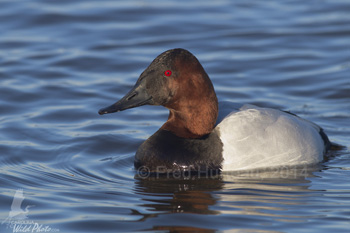 Both are very striking in appearance, and are favorites among bird photographers, not only because of their visual appeal, but because of the relative difficulty in getting good photos of them. The Cambridge location solves that difficulty level issue with ease, and attracts a steady stream of duck-addicted photographers who invariably make a yearly pilgrimage to this location to get their annual “fix”. With these stunning ducks so nonchalantly swimming around, often within ten feet of the camera…. ducks you normally might not get within 100 yards of in the wild…. it’s easy to understand the attraction.
Both are very striking in appearance, and are favorites among bird photographers, not only because of their visual appeal, but because of the relative difficulty in getting good photos of them. The Cambridge location solves that difficulty level issue with ease, and attracts a steady stream of duck-addicted photographers who invariably make a yearly pilgrimage to this location to get their annual “fix”. With these stunning ducks so nonchalantly swimming around, often within ten feet of the camera…. ducks you normally might not get within 100 yards of in the wild…. it’s easy to understand the attraction.
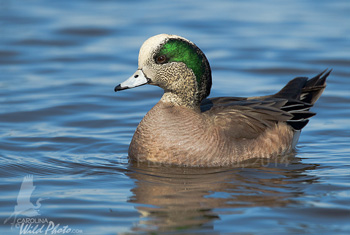 The Canvasback and Redhead aren’t the only beautiful visitors here though. Another species that frequents this location is the stunning American Wigeon as in the photo of a drake at right. The brilliant green “swash” along the side of its head, and the nearly white top of its head is as distinctive as it is beautiful. The white topped head has given this duck the nickname of “Baldpate” for obvious reasons. Note that its bill has the same coloration as the Redhead, though the bill is smaller and shaped differently.
The Canvasback and Redhead aren’t the only beautiful visitors here though. Another species that frequents this location is the stunning American Wigeon as in the photo of a drake at right. The brilliant green “swash” along the side of its head, and the nearly white top of its head is as distinctive as it is beautiful. The white topped head has given this duck the nickname of “Baldpate” for obvious reasons. Note that its bill has the same coloration as the Redhead, though the bill is smaller and shaped differently.
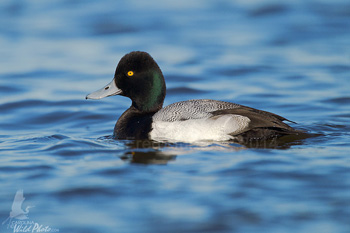 There was a plentiful supply of Scaup at Cambridge on this trip. Of the two variations on Scaup…. the Lesser Scaup and Greater Scaup… the Lesser Scaup seemed to dominate. The drakes have a dark iridescent head that varies between green and purple depending upon the angle of light. The bill is similar to the Redhead and Wigeon…. light blue-gray… but with a black tip that is much smaller than the other two. The chest is black, the back is whitish with wavy black bars giving it a gray appearance, the sides are plain white with very pale to no markings, and the tail is dark. The eyes, whether drake or hen, can be either a deep yellow as in the drake photo here, or orange as in the photo below of the plainer brown Lesser Scaup hen.
There was a plentiful supply of Scaup at Cambridge on this trip. Of the two variations on Scaup…. the Lesser Scaup and Greater Scaup… the Lesser Scaup seemed to dominate. The drakes have a dark iridescent head that varies between green and purple depending upon the angle of light. The bill is similar to the Redhead and Wigeon…. light blue-gray… but with a black tip that is much smaller than the other two. The chest is black, the back is whitish with wavy black bars giving it a gray appearance, the sides are plain white with very pale to no markings, and the tail is dark. The eyes, whether drake or hen, can be either a deep yellow as in the drake photo here, or orange as in the photo below of the plainer brown Lesser Scaup hen.
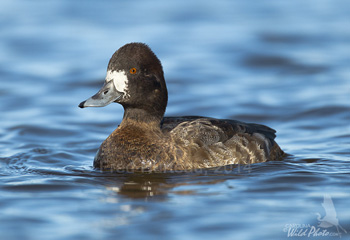 Though the hen Lesser Scaup may seem “plain Jane” with its overall brown coloration, I find them quite attractive. The variation of browns makes for a pleasing pattern that appeals to me. The hen is easy to identify from other brownish ducks by the white band around the base of the bill. Other than the occasional gaggle of Canada Geese which sometimes drop in to overlord the ducks here, there are almost always a few of the widely recognized Mallard ducks adding to the mix of feathered visitors.
Though the hen Lesser Scaup may seem “plain Jane” with its overall brown coloration, I find them quite attractive. The variation of browns makes for a pleasing pattern that appeals to me. The hen is easy to identify from other brownish ducks by the white band around the base of the bill. Other than the occasional gaggle of Canada Geese which sometimes drop in to overlord the ducks here, there are almost always a few of the widely recognized Mallard ducks adding to the mix of feathered visitors.
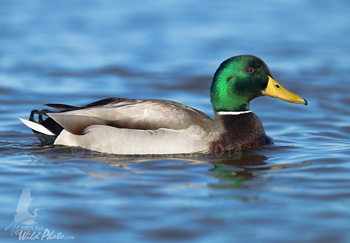 The Mallard is about as common (as in “abundant”) as ducks come, but there is nothing “common” (as in “plain”) about that brilliant iridescent green head, deep yellow bill, white neck ring and burgundy chest. It is a stunner in good light, and often under-appreciated, even by myself. I do still try to get that “perfect” portrait of the drake Mallard when the opportunity comes along. It’s always a challenge to find the right light and angle to capture that iridescent green of the head at its optimum. I believe this particular image is my best photo to date of a drake Mallard.
The Mallard is about as common (as in “abundant”) as ducks come, but there is nothing “common” (as in “plain”) about that brilliant iridescent green head, deep yellow bill, white neck ring and burgundy chest. It is a stunner in good light, and often under-appreciated, even by myself. I do still try to get that “perfect” portrait of the drake Mallard when the opportunity comes along. It’s always a challenge to find the right light and angle to capture that iridescent green of the head at its optimum. I believe this particular image is my best photo to date of a drake Mallard.
With opportunities to get photos like these, Cambridge has taken a top spot on my list of places to visit. For “Part three” of my marathon weekend postings I will cover what was for me a first time visit to a lighthouse… but it wasn’t to see the lighthouse. No indeed, it was to see ducks I’d never before seen or photographed, and I was not disappointed. Stay tuned.
 This blog is an extension of the
This blog is an extension of the 